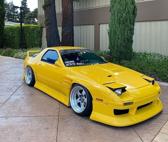
Review on 🔭 Celestron NexStar 5SE Telescope: Computerized Scope for Beginners & Advanced Users - SkyAlign Technology - 5-Inch Primary Mirror - 40,000+ Celestial Objects by Michael Hale

Great telescope for amateur astronomers
This is a great telescope for amateur astronomers. First of all, the design of the Schmidt-Cassegrain telescope offers a long focal length in a compact size and is typically cheaper than refractors. Portability was one of my biggest selling points. Celestron's reputation was another selling point for me, in addition to other reviews for this particular telescope. I've used it a few times since receiving it this week and I'm very happy with my purchase. For those thinking of buying a Celestron NexStar 5SE and just getting into the hobby I highly recommend reading the manual before using it as you are putting a decent amount of money into this telescope and it deserves to be picked up will. Care and Intended Use About the Good, Pros and Cons PROS: The optics are very impressive and the telescope is factory collimated so you don't have to worry about that when you take it out of the box. The images are razor sharp and the aperture is more than sufficient to view typical solar system objects such as the moon and planets. I was particularly impressed by the fact that I was able to see the following objects in significant lighting conditions (including the Moon in the late Waking Moon phase): M57 (Ring Nebula), M11 (Wild Duck Cluster), M16 (Eagle Nebula). ), NGC 869 and NCG 884 (double clusters), M6 (butterfly clusters) and of course Saturn. Tracking on the NexStar 5SE is acceptable to say the least. In addition, I am very happy with the portability of this telescope, especially considering the long focal length compared to its size. Plus, I was able to assemble it in less than 10 minutes. Cons: Battery life. The NexStar 5SE can run on 8 AA batteries, but that's not enough if you plan on long-term monitoring. I run my 5SE with 8 x 1400mah Energizer NiMH rechargeable batteries and managed to squeeze just under 2 hours out of it before the loss of tracking accuracy and the motor shutting off made it obvious the batteries were dead. I recommend purchasing a Celestron power supply and AC adapter for extensive observations, which in itself has its limitations as the adapter can be twisted with the cable. Even if the batteries are removed from the telescope, the time, date, and coordinates must be reset when the batteries are reinserted. Aiming the viewfinder was a little tedious too, but with time and patience you'll get the most accurate tracking possible if you aim it properly. The tracking isn't perfect either - when I found the ringed nebula it disappeared from my eyepiece's field of view, but with a small manual adjustment I brought it back into view and was very blown away by what I saw! AND RECOMMENDATIONS: I'm giving four stars for the battery life, the tangling of the cable when using the AC adapter and the considerable effort involved in setting up the viewfinder, which I highly recommend on a distant object during the day like a street lamp or a telecommunications tower. Limitations aside, I was very impressed with the image quality, portability, and ease of assembly. My recommendation is: READ THE USER MANUAL BEFORE USING THE TELESCOPE! Purchase a power adapter and a Celestron power adapter if you intend to watch TV for several hours. Also buy a Barlow lens, which will increase the magnification of your eyepieces. I bought a Celestron Omni 2x Barlow. Eyecups can make a world of difference, but why settle for a set that can cost you hundreds of dollars? I recommend the Celestron 8-24mm Zoom Eyepiece (93230); it saves you money and space. In conclusion, I would highly recommend this telescope to beginner stargazers. Before moving on to larger and more complex telescopes, discover the possibilities of this excellent product. One last tip: images seen through a telescope do NOT look like the images from the Hubble or Kepler telescopes seen online. These photographs are the result of long exposure astrophotography and the complete absence of atmospheric turbulence. Our eyes perceive colors very poorly in the dark, so deep sky objects such as nebulae and galaxies appear in grayscale or black and white. However, observing these things through the NexStar 5SE was a truly amazing experience for me, and in the face of significant sky pollution, which also included light from the moon in the very late phase of the waking moon (where it is almost full). I can only imagine how many more star clusters and nebulae without moonlight will be noticeable. I can not wait!
- Camera and photo
- Power socket required
New products
Comments (0)
Top products in 🔭 Binoculars & Scopes
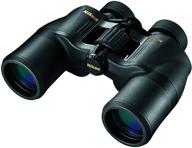
👀 Nikon ACULON A211 8x42 Binoculars: High Quality Optics for Exceptional Viewing

15 Review
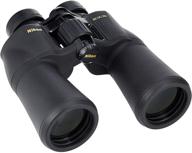
Nikon ACULON A211 8248 10x50 Binoculars (Black)

20 Review
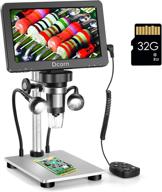
Dcorn 7'' Digital Microscope with 1200X Magnification, 12MP Camera, and 32GB 🔬 TF Card for Adult Hobbyists: Soldering, Coin Collecting, and More - Windows/Mac Compatible

11 Review
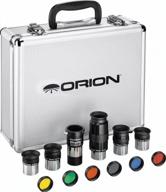
Enhance Your Stargazing Experience With Orion'S Premium Telescope Accessory Kit (1.25-Inch, Silver)

21 Review





